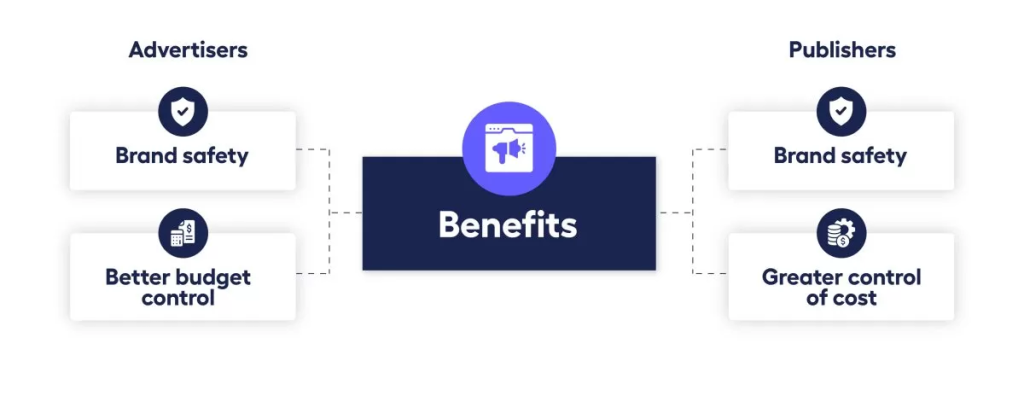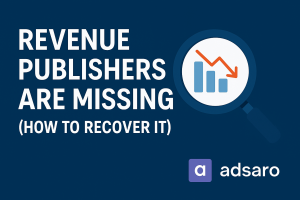In the ever-evolving world of digital advertising, an Ad Exchange plays a pivotal role in connecting advertisers with publishers through a real-time bidding process. An ad exchange is essentially an online marketplace where digital ad inventory is bought and sold. It allows advertisers to bid on advertising space across multiple websites and platforms, giving them the chance to target specific audiences with their ads. For publishers, it offers a streamlined way to monetize their content and optimize ad revenues by opening up their inventory to a broad pool of advertisers.
How Does an Ad Exchange Work?

An ad exchange acts as an intermediary between advertisers, publishers, and demand-side platforms (DSPs) or supply-side platforms (SSPs). When a user visits a website with ad space, the ad exchange runs an auction in real-time, allowing advertisers to bid on the available inventory. Based on factors like bid price, ad relevance, and targeting criteria, the highest bid wins, and the ad is displayed to the user. This process happens in milliseconds, ensuring that the most relevant ads are shown to the right audience.
Benefits of Ad Exchange

For Advertisers
Greater Reach and Flexibility:
With access to multiple ad networks and inventory from a wide variety of publishers, advertisers can expand their reach, improving the chances of connecting with their target audience.
Ad exchanges operate on a real-time bidding model, enabling advertisers to adjust their bids dynamically based on performance data. This helps optimize ad spend and ROI.
Advanced Targeting:
Ad exchanges allow advertisers to target audiences based on geographic location, demographics, interests, and user behavior, ensuring ads reach the right people at the right time.
Transparency and Control:
Advertisers have full visibility into the ad placement and performance, allowing them to make data-driven decisions and optimize campaigns for better results.
For Publishers
Increased Revenue Potential:
By opening up their inventory to multiple advertisers and ad networks, publishers can maximize revenue and fill more of their ad space at competitive prices.
Automated Ad Management:
Ad exchanges automate much of the ad buying and selling process, reducing the time and effort required to manage direct relationships with advertisers.
Better Ad Quality:
Publishers can display high-quality, relevant ads to their audience, improving user experience and keeping visitors engaged.
Types of Ad Exchanges

There are several types of ad exchanges that cater to different market needs, such as:
Open Ad Exchanges:
These are open to all advertisers and publishers. The process is often transparent, and anyone can participate in the auction. Example : Google Ad Exchange, Sovern, PubMatic, OpenX etc.
Private Ad Exchanges:
In contrast to open exchanges, private exchanges are invitation-only and are often used by premium publishers or larger advertisers. They allow for greater control over who can access the ad inventory.
Programmatic Ad Exchanges:
These exchanges focus on programmatic advertising, where ads are bought and sold automatically. Data-driven technologies enable real-time decision-making and optimization.
Ad Exchange vs. Ad Network: What’s the Difference?

While both ad networks and ad exchanges facilitate the buying and selling of digital ad space, there are key differences:
Ad Networks:
These act as intermediaries between publishers and advertisers. They aggregate ad inventory from various publishers and sell it to advertisers as a packaged deal.
Ad Exchanges:
These are more like open marketplaces where ad inventory is bought and sold in real time through auctions. Advertisers can bid on individual impressions rather than buying in bulk, offering greater flexibility and targeting precision.
The Future of Ad Exchanges

As digital advertising evolves, ad exchanges will become more sophisticated. Advances in AI, machine learning, and data analytics will improve targeting and campaign optimization. The shift to mobile-first, video, and native ads is shaping the future of ad exchanges, driving innovation to better connect advertisers and users in an increasingly digital world
Conclusion
An Ad Exchange is a powerful and essential tool in the display advertising ecosystem, benefiting both advertisers and publishers. It provides a dynamic, efficient way to buy and sell ad inventory, offering greater transparency, control, and reach. Understanding how ad exchanges work helps businesses optimize their advertising strategies and improve results.








Leave a Reply